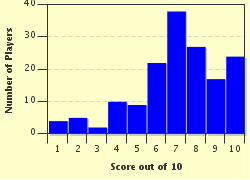Quiz Answer Key and Fun Facts
1. First of all, this great physicist in 1905, started the modern day discussions, about the dual nature of electrons. He also invented the constant named after him, which has achieved tremendous success. What's his name?
2. After Planck, another great German scientist did an awkward thing - he published his special theory before his general theory on a particular topic. Simple - who is he?
3. In which conference, the fifth and most famous edition of which was held in 1927, were some of the greatest names in quantum physics present, but sadly there was no concrete outcome of it! (It was named after a famous chemist.)
4. There cannot be a quantum physics quiz without Schrodinger. Which animal did he specifically use for his famous thought experiment regarding uncertainty?
5. This young British physicist was one of the "brat pack", along with another Austrian prodigy, who changed the world of quantum physics, turning it on its head. Name both of them.
6. Now we come to the Danish king of physics - Niels Bohr. What did Bohr imply, in his orbit theory about electrons falling into the nucleus, that was not accepted by the mass audience of physicists at that time?
7. This French physicist is widely regarded as one of the greatest ever. He first promoted the wave particle duality through a simple equation. This formed the basis for other scientists to work on. Who was he?
8. Right, now to the 1940s and onward. This particular topic was studied by Bohr, Einstein, Dirac, de Broglie, Feynman, and even Hawking, but even seventy years later, in 2010, no one on earth had come up with a proper explanation of this strange phenomenon. No one could have imagined that this happens in the quantum world too. What topic?
9. This particular laboratory houses the biggest particle accelerator on earth. This is the place to be if you are involved in developing particle physics. Situated in between two countries, simple: name it.
10. Lastly, this one's a tough nut to crack. Which of the following subatomic quantities is named after a scientist?
Source: Author
shaunak_rokz
This quiz was reviewed by FunTrivia editor
WesleyCrusher before going online.
Any errors found in FunTrivia content are routinely corrected through our feedback system.

